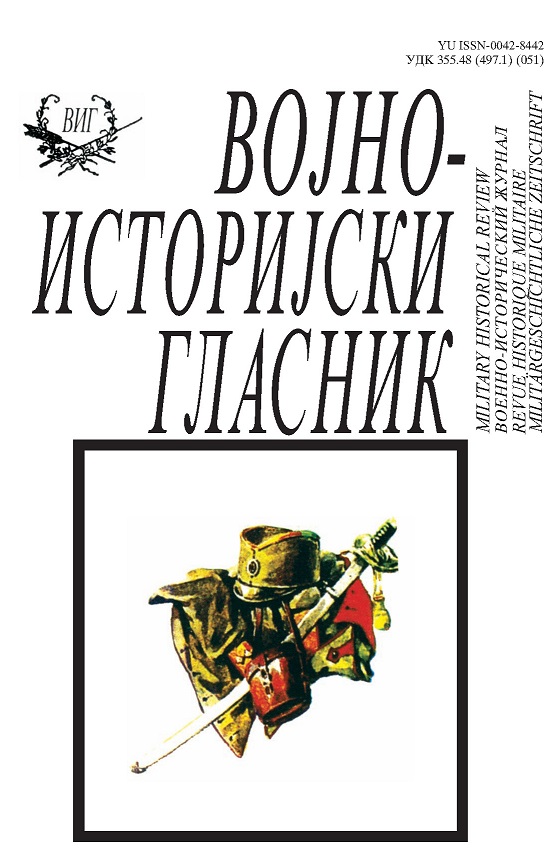Од сарадње до сукоба (Устанички покрети у источној Босни јули 1941 – фебруар 1942)
From Cooperation to Conflict: Resistance Movements in Eastern Bosnia, July 1941 – February 1942
Author(s): Dragica KoljaninSubject(s): Civil Society, Military history, Social history, WW II and following years (1940 - 1949), Peace and Conflict Studies
Published by: Institut za strategijska istraživanja
Keywords: Resistance movements; Eastern Bosnia; cooperation; conflict; 1941-1942; partisan movement; chetnik movement; Draža Mihajlović; Yugoslav Communist Party;
Summary/Abstract: From the summer 1941, two resistant movements have been organized in Eastern Bosnia. One was indigenous that has merged with partisan or chetnik movement of Colonel Draža Mihailović and the other was partisan movement organized by the Communist Party of Yugoslavia. Their front remained unified relatively longer than elsewhere. Process of differentiation has been slown due to the characteristics of this area as a part of ustashi Indenpendent State of Croatia. A wish for basic survival has been stronger among the insurgents than politics. In relatively short period of time greater number of insurgents have been changing their sides. In October 1941, a joint Partisan – Chetnik Headquarters have been established and during following two months uprisal has reached its peak. This area has been a part of joint liberated area of Western Serbia, and Eastern Bosnia. When the chetnik – partisan conflict has started in Western Serbia, Eastern Bosnia has remained out of it for some time, and operational cooperation beetwen two movements has continued all the way to the begging of January following year. The differences between two movements have culminated during German offensive in Eastern Bosnia in the period of January – February and afterwards started irreconcilable conflict. In their effort to draw the insurgents to their cause, partisan leadership has organized volunteer detachments from the former members of chetnik movement. In the circumstances of a new offensive of German, Italian and ustashi (Croat) armed forces – the Operation „Trio“, during April 1942 in volunteer and some partisan units chetnik coups have occurred. The insurgents than have gone to the side of those chetniks who have been seeking for the modus vivendi with Croat authorities and German and Italian commands. Due to the radical changes in the balance of powers, until the April 1942, fighting insurgency movement in Eastern Bosnia has been defeated.
Journal: Vojnoistorijski glasnik
- Issue Year: 2009
- Issue No: 2
- Page Range: 97-116
- Page Count: 20
- Language: Serbian

